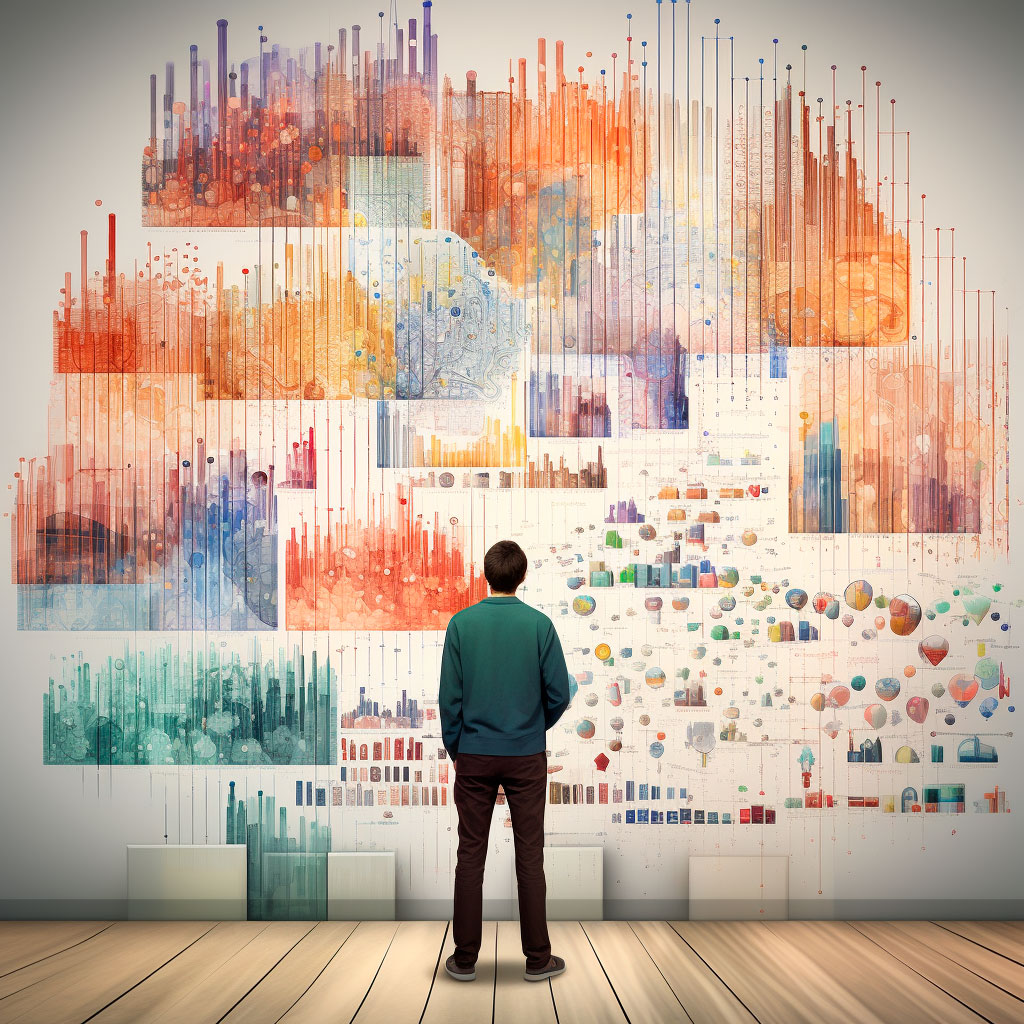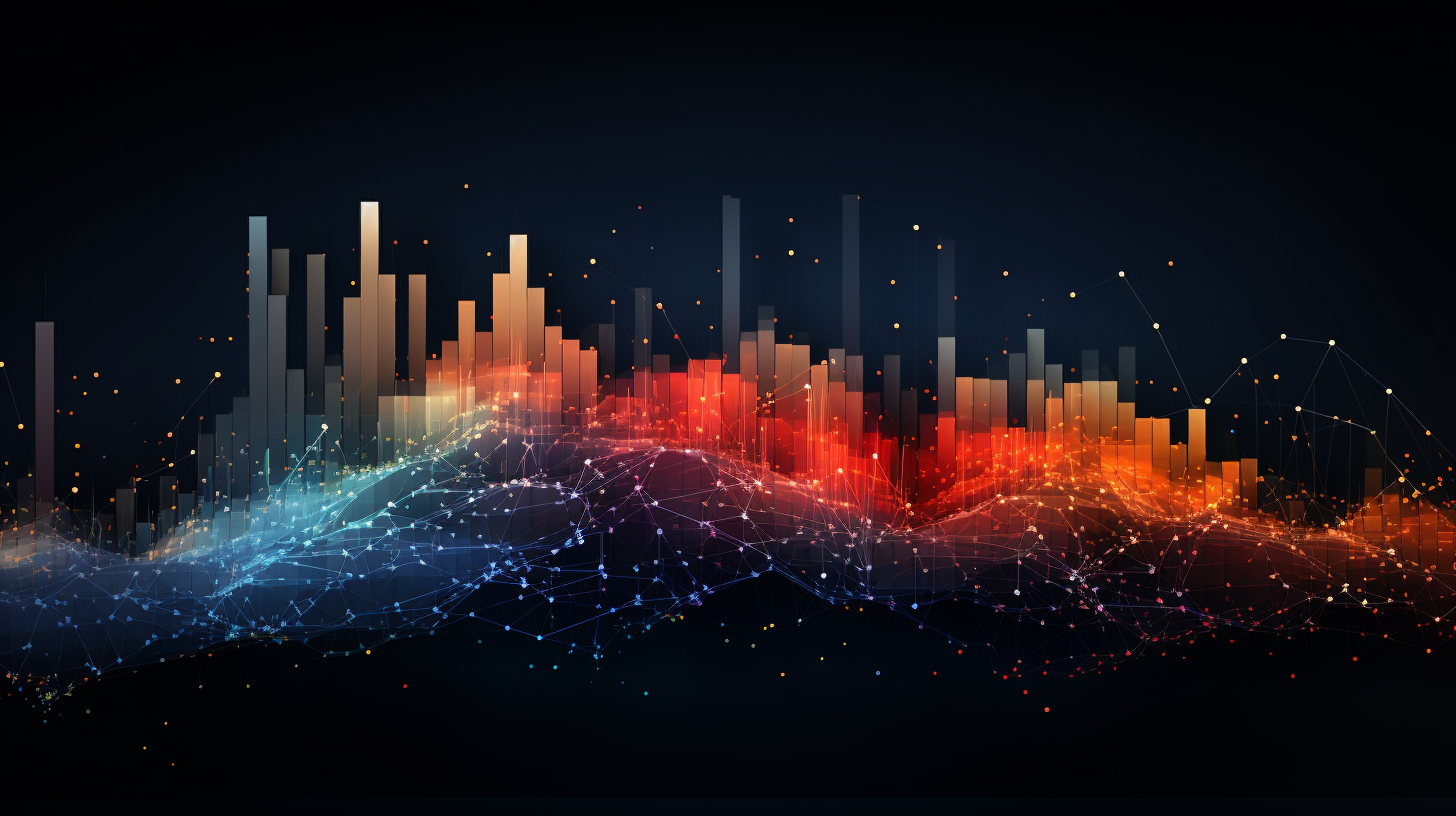Insights
How AI helps in data visualization
Artificial Intelligence has burst into our lives with a force comparable to very few things in recent years and is undoubtedly changing the processes with which the digital sector has been working in recent years. The potential of AI is growing leaps and bounds in all fields, acquiring new skills that make it suitable for new applications. But one of the fields in which it has already shown enormous potential for some time is data analysis.
AI is a very effective tool to help companies collect, process, and represent data. At a time when the volume of data generated and managed by companies is increasing, processing requires the use of machine learning techniques and neural networks if you want to make the most of it. Therefore, in this article, we will discuss some of the benefits of AI in data analysis and visualization techniques. And also (to provide a more realistic view) we will analyze some of the challenges posed by the use of this technology.
Predictive Analysis
Of all the advantages offered by AI applied to data visualization, this may be the most outstanding. Because data visualization is not only used to interpret and analyze what has already happened in our company, but one of its most interesting uses is being able to know what will happen in the future, almost like an oracle.
This is possible because data contains two very useful concepts: patterns and correlations.
Patterns are behaviors that occur at regular intervals. Suppose we have an amusement park. Here, the number of visitors tends to follow a pattern: like a roller coaster, the influx goes up on weekends, drops on weekdays, and peaks during the summer months, as it is an outdoor activity that usually requires good weather. Thanks to data visualization, these patterns are easily identified because they present repetitive forms. But also, with AI, much more complex patterns can be detected.

On the other hand, correlations are the strength of the link between different values. For example, continuing with our amusement park example, a correlation could be established between attendance (number of tickets sold) and the number of VIP passes purchased since the more queues are formed at the attractions, the more users choose to buy these passes. If two values show similar behavior over time, then we say they are correlated. A direct correlation mathematical rule can even be established.
Establishing patterns and correlations can generate forecasts. But detecting them is not always as obvious as in the examples we have seen. To identify strong patterns and correlations to generate reliable forecasts, it is necessary to process large volumes of data. This is precisely where artificial intelligence can deploy all its potential, as it can not only analyze data quickly and thoroughly, but one of the first skills AI developed is precisely to find patterns and correlations.
Currently, there are numerous predictive analysis algorithms that use statistical models (such as ARIMA and SARIMA) and machine learning to analyze data. Machine Learning-based tools can develop autonomous reasoning abilities, pose hypotheses, and establish forecasting models instantly.
Sentiment Analysis
Another major use already being given to artificial intelligence in the field of data analysis is sentiment interpretation.
Data is not always measured by its quantity, but sometimes we are interested in delving deeper to know beforehand whether they are good or bad, as is the case with reviews or interactions on social networks. Taking the amusement park as an example again, if the marketing team wants to correctly measure the impact of one of its campaigns on social networks, they could not be guided solely by the number of interactions based on having many being good and having few being bad: a comment on a social network can be negative or positive, so what would really serve to measure the effectiveness of the campaign would be having achieved a lot of impact on social networks and that it was predominantly positive. If not done this way, the data would not be of quality and this would negatively influence the accuracy and reliability of the results obtained from them.

Thanks to natural language processing, artificial intelligence can determine whether a piece of text – like a post – is positive, negative, or neutral, using methods capable of understanding both the semantics of sentences and their context. This is very useful, not only for measuring the effectiveness of specific campaigns but also for identifying general trends in users’ perception of us and our service, a value that is highly correlated with other values and therefore can be very useful when making estimates.
Customized Visualizations
AI can also help customize data visualizations on dashboards. Thanks to natural language, users can use the tool more easily, asking direct questions and receiving a data visualization in response to their question, choosing the visual encoding method that is most helpful for understanding the data and facilitating decision-making. It can also use machine learning algorithms to understand the preferences of the different application users and thus automatically display data that matches their most common queries.
Challenges of artificial intelligence in data analysis
So far, we have talked about the possibilities of Artificial Intelligence in data visualization. But, as we indicated at the beginning, we are also going to discuss challenges that are important to address.
The main concern about artificial intelligence is undoubtedly biases. Data can be strictly correct, but not faithfully represent a reality. These biases can be especially dangerous, as certain aspects of society are based on inequalities and injustices that have been perpetuated for a long time. Therefore, if new decisions are made strictly based on that data, they will be equally unfair and will tend to perpetuate and even increase an inequality that in turn will generate more biased data.

An example would be the use of algorithms by banks to determine their clients’ access to credit: are certain groups denied financing because they are considered risk groups? Or are they risk groups precisely because they have been denied project financing for a long time? Or for example, it is also biased to conclude that a man is more suitable for a certain job than a woman just because based on the data it is established that there are many more men than women currently holding that position, without considering that maybe this reality is due to the fact that for many years women have not been able to access that position because it was not socially accepted.
Therefore, it is essential that algorithms are designed impartially and equitably and do not repeat gender, age, or ethnicity gaps. ____
As you can see, Artificial Intelligence is currently the essential tool for companies to achieve a competitive advantage. Thanks to it, more data can be processed faster and more accurately, and represented in a way that can be understood, analyzed, and used to make significant business decisions. It is no wonder that 65% of companies claim to plan to increase their spending on data analysis using AI soon.



